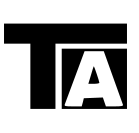Reasons Why Passwords Need to Be Reset Instead of Revealing the Original Password
 Tuanhdotnet
Tuanhdotnet5 min read

1. Password Storage: Why It’s Not Just a Simple String
When passwords are stored in a secure application, they aren’t saved as plain text. Instead, they’re hashed, meaning that each password is converted to a string of characters that cannot easily be converted back to the original password. This hashing process is a fundamental security practice that protects users’ data even if the database is compromised.

1.1 Secure Hashing Mechanisms
Hashing involves a one-way encryption function, typically using algorithms like BCrypt or Argon2, which produce a unique string from each password. This string cannot be decrypted, meaning that the application doesn’t actually know the original password—it only knows the hash.
Here’s how hashing works in practice, ensuring that an application never directly stores a readable password:
import org.springframework.security.crypto.bcrypt.BCryptPasswordEncoder;
public class PasswordService {
private BCryptPasswordEncoder passwordEncoder = new BCryptPasswordEncoder();
public String hashPassword(String password) {
return passwordEncoder.encode(password);
}
public boolean verifyPassword(String rawPassword, String hashedPassword) {
return passwordEncoder.matches(rawPassword, hashedPassword);
}
}
With this method:
- The system only stores hashedPassword in the database.
- To validate a password, it hashes the input and compares it to the stored hash, without knowing the original password.
2. Security Risks of Revealing the Original Password
Let’s dive into the key reasons why revealing the original password, even if it were possible, would introduce significant security risks.
Compromised Passwords in Multiple Systems
Many users reuse passwords across different sites and services. Revealing a password in one application could allow malicious actors to access other platforms where the user has used the same password. This domino effect increases the risk of data breaches, identity theft, and other forms of unauthorized access across multiple services.
Potential Data Breaches and Legal Compliance Issues
Storing passwords as plain text (which would allow retrieval) makes the system vulnerable to data breaches. Security regulations like GDPR and PCI-DSS require that companies protect user data through encryption or hashing. If a breach occurs and user passwords are stored in plain text, it could lead to severe penalties and loss of user trust.
Example: In the event of a database breach, hashed passwords remain secure because they cannot be reversed into their original form. On the contrary, plaintext passwords give attackers direct access to user accounts.
3. The Password Reset Process: A Safer Alternative
Password reset protocols are designed with security in mind. Here’s how they work and why they’re more secure.
3.1 Using One-Time Tokens for Verification
When a user requests a password reset, the system sends a unique, time-limited token to the user’s registered email. This token verifies the user’s identity without needing to know their previous password. Here’s an example of generating and verifying reset tokens:
import java.util.UUID;
public class PasswordResetService {
private Map<String, String> resetTokens = new HashMap<>();
public String generateResetToken(String userId) {
String token = UUID.randomUUID().toString();
resetTokens.put(token, userId);
return token;
}
public boolean verifyResetToken(String token, String userId) {
return userId.equals(resetTokens.get(token));
}
}
Explanation:
- generateResetToken creates a unique token associated with the user.
- verifyResetToken confirms that the user’s token matches the stored token, allowing the reset process to proceed securely.
This process ensures that only the account holder can initiate a password reset, without needing to expose or handle the original password.
3.2 Expiring Tokens and Protecting Accounts
Reset tokens should have a short expiration time to reduce the risk of misuse. For example, if a malicious actor gains temporary access to the user’s email, they have a limited time to use the token before it expires. This time-bound security provides additional protection for user accounts.
4. User Privacy and Trust: The Core of Password Security
Finally, password reset processes prioritize user privacy, which is vital in modern applications. By not storing or displaying the original password, applications show a commitment to security. This builds user trust, as they feel confident that their data is safe and that even the application cannot expose their credentials.
4.1 Avoiding Social Engineering Risks
If passwords were stored as plain text and could be revealed, malicious actors might exploit this to trick users into revealing other sensitive information. Instead, a reset-only policy ensures that even with social engineering tactics, the attacker won’t learn the actual password.
4.2 Compliance and Security Reputation
Password reset policies adhere to security standards and regulations, which helps companies avoid penalties and maintain a positive reputation. Users are more likely to trust systems that take strong measures to protect their accounts.
5. Conclusion
Revealing original passwords is a practice fraught with risk, undermining both security and user trust. By implementing password resets instead, applications protect users through secure hashing, one-time reset tokens, and time-bound verification measures. This approach reduces the risk of breaches, complies with security regulations, and respects user privacy. Proper password management is not just a necessity but a responsibility that ensures long-term security for users.
Have questions about secure password management or implementing these practices in your applications? Feel free to leave a comment below!
Read more at : Reasons Why Passwords Need to Be Reset Instead of Revealing the Original Password
0
Subscribe to my newsletter
Read articles from Tuanhdotnet directly inside your inbox. Subscribe to the newsletter, and don't miss out.
Written by

Tuanhdotnet
Tuanhdotnet
I am Tuanh.net. As of 2024, I have accumulated 8 years of experience in backend programming. I am delighted to connect and share my knowledge with everyone.